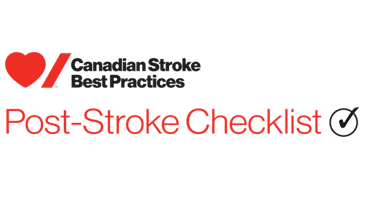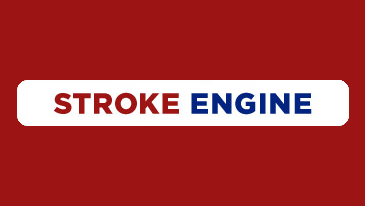- Definition and Considerations
- 1. Initial Stroke Rehabilitation Assessment
- 2. Stroke Rehabilitation Unit Care
- 3. Delivery of Inpatient Stroke Rehabilitation
- 4. Outpatient and In-Home Stroke Rehabilitation (including Early Supported Discharge)
- 5.1 Management of the Upper Extremity Following Stroke
- 5.2. Range of Motion and Spasticity in the Shoulder, Arm and Hand
- 5.3. Management of Shoulder Pain & Complex Regional Pain Syndrome (CRPS) following Stroke
- 6.1. Balance and Mobility
- 6.2. Lower Limb Spasticity following Stroke
- 6.3. Falls Prevention and Management
- 7. Assessment and Management of Dysphagia and Malnutrition following Stroke
- 8. Rehabilitation of Visual and Perceptual Deficits
- 9. Management of Central Pain
- 10. Rehabilitation to Improve Language and Communication
- 11. Virtual Stroke Rehabilitation
Recommendations
Definition: For the purposes of these recommendations ‘early’ refers to strength of evidence for therapies applicable to patients who are less than 6 months post stroke, and ‘late’ refers to strength of evidence for therapies applicable to patients who are more than 6 months from index stroke event.
A. General Considerations
- Patients should participate in training that is meaningful, engaging, progressively adaptive, intensive, task-specific and goal-oriented in an effort to improve transfer skills and mobility [Evidence Level: Early-Level A; Late-Level A].
B. Lower-Limb Gait Training
- Strength training should be considered for persons with mild to moderate impairment in lower extremity function in both subacute [Evidence Level C] and chronic phases [Evidence Level B] of recovery. Strength training does not affect tone or pain [Evidence Level A].
- Task and goal-oriented training that is repetitive and progressively adapted should be used to improve performance of selected lower-extremity tasks such as sit to stand, walking distance and walking speed[Evidence Level: Early-Level A; Late-Level A].
- Treadmill-based gait training (with or without body weight support) should be used to enhance walking speed, and distance walked as an adjunct to over-ground training or when over-ground training is not available or appropriate. [Evidence Level: Early-Level A; Late-Level A].
- Electromechanical (robotic) assisted gait training devices could be considered for patients who would not otherwise practice walking. They should not be used in place of conventional gait therapy. [Evidence Level: Early-Level A; Late-Level A].
- Rhythmic auditory stimulation (RAS) should be considered for improving gait parameters in stroke patients, including gait velocity, cadence, stride length and gait symmetry [Evidence Level A].
- Virtual reality training (such as non-immersive technologies) could be considered as an adjunct to conventional gait training [Evidence Level B].
- Mental Practice should be considered as an adjunct to lower extremity motor retraining [Evidence Level A].
- Functional electrical stimulation (FES) should be used to improve strength and function (gait) in selected patients, but the effects may not be sustained [Evidence Level: Early-Level A; Late-Level A].
- Biofeedback, in the form of visual and/or auditory signals to indicate unequal weight bearing and timing, can be used to enhance gait training and improve functional recovery [Evidence Level B]
- The need for gait aids, wheelchairs, and other assistive devices should be evaluated on an individual basis [Evidence Level: Early-Level C; Late-Level C].
- Prescription and/or acquisition of an assistive device should be based on anticipation of a long-term need [Evidence Level: Early-Level C; Late-Level C].
- Once provided, patients should be reassessed, as appropriate, to determine if changes are required or equipment can be discontinued [Evidence Level: Early-Level C; Late-Level C].
- Ankle-foot orthoses should be used on selected patients with foot drop following proper assessment and with follow-up to verify its effectiveness [Evidence Level: Early-Level A; Late-Level A].
C. Balance
- Therapists should consider both voluntary and reactive balance control within their assessment and treatment [Evidence Level C].
- The following therapies should be considered to improve balance following stroke:
- Trunk training/seated balance training [Evidence Level: Early-Level A; Late-Level A];
- Standing practice (i.e. sit-to-stand practice) [Evidence Level: Early-Level A];
- Force platform biofeedback [Evidence Level: Early-Level A; Late-Level A] and task-oriented training with or without multisensory intervention [Evidence Level: Late-Level A].
- Partial body weight support treadmill training [Evidence Level: Early-Level B].
- Balance training combined with virtual reality in the late phase of stroke [Evidence Level A], but not in the early phase of stroke [Evidence Level A].
- The use of unstable surfaces and balance boards [Evidence Level: Late-Level A].
- Cycling [Evidence Level: Early-Level B; Late-Level B];
- Aquatic balance training [Evidence Level: Late-Level B]
- Tai Chi [Evidence Level B].
- Balance training combined with visual feedback, motor imagery training and whole-body vibration do not improve balance outcomes [Evidence Level: Early-Level A].
D. Aerobic Training
- Once medically stable, patients should be screened for ability to participate in aerobic exercise by appropriately qualified health care professionals with expertise in aerobic training [Evidence Level C].
- A medical history and physical examination should be performed to identify factors that require special consideration or constitute a contraindication to aerobic exercise [Evidence Level: Early -Level B; Late-Level B].
- An exercise stress test with electrocardiogram, and monitoring of blood pressure and subjective symptoms, should be considered particularly for patients with a known history of cardiovascular disease [Evidence Level: Early -Level C; Late-Level C].
- If the target intensity of the planned program is light (i.e., <40-45% of predicted heart rate reserve), a clinical submaximal test (e.g., six-minute walk test) may be adequate to evaluate readiness for aerobic training [Evidence Level: Early -Level C; Late-Level C].
- Individually-tailored aerobic training involving large muscle groups should be incorporated into a comprehensive stroke rehabilitation program to enhance cardiovascular endurance and cognitive function [Evidence Level: Early -Level A; Late-Level A]
- To achieve a training effect, patients should participate in aerobic exercise at least 3 times weekly for a minimum of 8 weeks, progressing as tolerated to 20 minutes or more per session, exclusive of warm-up and cool-down [Evidence Level: Early -Level B; Late-Level B].
- Heart rate and blood pressure should be monitored during training to ensure safety and attainment of target exercise intensity [Evidence Level: Early -Level A; Late-Level A].
- To ensure long-term maintenance of health benefits, a planned transition from structured aerobic exercise to more self-directed physical activity at home or in the community should be implemented. [Evidence Level: Early -Level A; Late-Level A].
- Strategies to address specific barriers to physical activity related to patients, health care providers, family, and/or the environment should be employed [Evidence Level: Early -Level A; Late-Level A].
Stroke frequently affects balance and the use of the legs. Walking is a valued function by patients to facilitate every day interaction. Along with the goal of increasing a patient’s safety and ability to walk, basic abilities to stand and transfer safely must also be addressed. To ambulate safely, patients may require assistive devices such as a cane or walker. For walking to be a feasible alternative to wheelchair mobility, critical elements would include having a reasonable walking speed, endurance and balance. Unfortunately, some individuals may not achieve independence in walking and may require a wheelchair.
People with stroke emphasized the importance of the involvement of their family members and caregivers when receiving education and training regarding gait, mobility, and aerobic exercises.
To achieve timely and appropriate assessment and management of basic mobility, postural control, lower extremity function, gait, and transfer skills, the organization/rehabilitation setting requires:
- Organized stroke care, including stroke rehabilitation units with a critical mass of trained staff and an interdisciplinary team during the rehabilitation period following stroke.
- Initial and ongoing standardized assessment performed by clinicians trained and experienced in stroke rehabilitation.
- Timely access to specialized, interdisciplinary stroke rehabilitation services as defined in recommendations.
- Timely access to appropriate intensity of rehabilitation for stroke survivors, including sit to stand training as defined in recommendations.
- Access to required supportive devices and equipment to promote safety and independence. This equipment should be affordable. Processes should be in place to ensure proper assessment of patients to meet equipment needs (e.g., seating assessments).
- Access to ECG monitored exercise stress testing and experienced physician to develop appropriate intensity of aerobic exercise.
- Extent of change (improvement) in functional status on the 6-Minute Walk Test from admission to an inpatient rehabilitation program to discharge. Change (improvement) in functional status scores (e.g., FIM® Instrument sub score locomotion) from admission to an inpatient rehabilitation program to discharge.
- Median length of time from stroke admission in an acute care hospital to assessment of rehabilitation potential by a rehabilitation healthcare professional.
- Median length of time spent in active rehabilitation on a stroke rehabilitation unit during inpatient rehabilitation.
- Median hours per day (minimum of three) of direct task-specific therapy provided by the interdisciplinary stroke team.
- Median days per week (minimum of five) of direct task specific therapy provided by the interdisciplinary stroke team.
- Extent of change (improvement) in functional status score (e.g., CMSA lower limb sub scale) from admission to an inpatient rehabilitation program to discharge.
- Extent of change in functional status scores using a standardized assessment tool (e.g., FIM® Instrument) from admission to an inpatient rehabilitation program to discharge (average and median).
- Extent of change in lower limb functional status using a standardized assessment tool (e.g., Chedoke-McMaster Stroke Assessment sub scale) from admission to an inpatient rehabilitation program to discharge.
- Extent of change in lower limb spasticity scores using a standardized assessment tool (e.g., Modified Ashworth Scale) from admission to an inpatient rehabilitation program to discharge.
Measurement Notes:
- Therapy time may be extracted from rehabilitation professional workload measurement systems where available.
- The 5m or 10m gait speed test may be used as the most basic measurement for those not able yet to do 6-minute walk test.
- Ensure consistency in start time for any time-sensitive
Health Care Provider Information
- Table 1: Stroke Rehabilitation Screening and Assessment Tools
- FIM® Instrument
- AlphaFIM® Instrument
- Chedoke-McMaster Stroke Assessment
- Modified Ashworth Scale
- 6 minute walk test
- Fugl-Meyer Assessment
- Functional Ambulation Categories
- Timed Up and Go Test
- 6-Minute Walk Test
- Berg Balance Scale
- Stroke Engine
Information for People with Stroke, their Families and Caregivers
Evidence Table and Reference List
Lower-Limb Gait Training
Strength Training
Many individuals experience muscle weakness as a consequence of stroke. Strength training may help to improve measures of gait and balance. Flansbjer et al. (2008, 2012) randomized 24 persons living in the community a minimum of 6 months post stroke to a training group that participated in supervised progressive resistance training of the knee muscles twice weekly for 10 weeks, or to a control group who continued their usual daily activities. The authors found that on the paretic side, the mean dynamic knee muscle strength extension and flexion in the intervention group had improved significantly more at the end of treatment and was maintained at 4-year follow-up compared to the control group. However, there were no significant differences between groups in mean improvement on the Timed-up-and Go test, gait speed or distance traveled on the 6-Minute Walk Test at 4 years. Cooke et al. (2010), randomized participants with subacute stroke (mean 1 month) to one of three treatment groups for a duration of 6 weeks: 1) conventional physiotherapy (CPT) + Functional Strength training (FST); 2) extra intensity training (CPT + CPT); or 3) CPT alone. Following the intervention both experimental groups showed improvement in walking speeds over the CPT alone group, but this reached significance in the CPT + CPT group. The CPT + CPT group also showed significant improvement in the number of participants with a walking speed over 0.8m/s compared to the CPT group. No significant differences were noted between-groups for torque about the knee, symmetry step length, symmetry step time, the Rivermead score, or on the EuroQoL. At the 12-week follow-up no significant differences were identified between groups.
Task Oriented Training (Task-Specific Training)
Task oriented training (also called task-specific training) involves active practice of task-specific motor activities. Repeated motor practice has been shown to improve walking speed and functional ambulation.
A Cochrane review by English et al. (2017) pooled findings from 17 RCTs that compared circuit class training with at least 3 clients, provided for a minimum of once-weekly sessions for a minimum of four weeks, with no therapy, sham therapy, or another therapy modality. Only studies that reported interventions with a focus on repetitive practice of functional tasks arranged in a circuit, with the aim of improving mobility, were included. Pooling the results from 10 trials, the mean distance walked during the 6-minute walk test was 60.86 metres further (95% CI 44.55 to 77.17m), compared with the control condition, which exceeded the minimal clinically important difference of 34.4 metres. The mean gait speed in the intervention groups was 0.15 metres/ second faster (0.10 to 0.19 m/s) compared with the control group. Other outcomes with scores significantly higher in the intervention group included Timed-up-and Go, Stroke Impact Scale, Functional Ambulation Classification and the Rivermead Mobility Index. In another Cochrane review, French et al. (2016) examined task-specific training on upper and lower-limb functions compared with usual care, an alternative intervention, or no care. Lower limb repetitive task-oriented training interventions were tested in 17 trials. Two trials focused on interventions specifically on sit-to-stand practice, 6 trials focused on walking practice, while 4 trials investigated interventions that focused specifically on sitting balance trunk control, and balance. Repetitive task training was associated with significantly greater improvements in walking distance (MD= 34.80 metres, 95% CI 18.19 to 51.41 metres; 9 studies) and functional ambulation (SMD= 0.35, 95% CI 0.04 to 0.66; 8 studies), sit-to-stand post treatment (SMD=0.35, 95% CI 0.13 to 0.56, 7 studies) and standing balance or reach (SMD=0.24, 95% CI 0.07 to 0.42; 9 studies).
Treadmill Training with and without Body Weight Support
In a Cochrane review, Mehrholz et al. (2017) included the result of 56 trials (n=3,105) and concluded that patients with stroke who received treadmill training (with or without body weight support) in combination with physiotherapy had significantly improved gait velocity (mean difference=0.06 m/s, 95% CI 0.03 to 0.09) and greater walking endurance (MD=14.19 metres, 95% CI 2.92 to 25.46), when assessed at the end of treatment. Among studies evaluating treadmill training with body weight support, patients were no more likely to achieve independent walking than patients receiving gait training without these devices (risk difference= -0.00, 95% CI -0.02 to 0.02), nor was gait velocity or walking endurance increased significantly at the end of scheduled follow-up (MD=0.03 m/s, 955 CI -0.05 to 0.10 and MD= 21.64 m, 95%CI -4.70 to 47.98). In the MOBILISE trial, (Ada et al. 2010, Dean et al. 2010) 126 patients were randomized to an experimental or a control group within 28 days of stroke and received treatment until they achieved independent walking or for as long as they remained in hospital. Participants in both groups received 30 minutes of walking practice 5 days/week. Additional lower-limb therapy was provided for an additional 30 minutes/day. Participants in the experimental group undertook up to 30 minutes per day of treadmill walking with sufficient body weight support such that initially, the knee was within 15 degrees of extension in mid stance. The control group received up to 30 minutes of over-ground walking training, with the use of aids, if required. Although there were no differences in the proportion of independent ambulators between groups at one, two or 6 months, participants in the experimental group achieved independence in ambulation a median of 14 days sooner.
Electromechanical/Robot-Assisted Gait Training Devices
In an updated Cochrane review, Mehrholz et al. (2017) included 36 trials studies (n=1,472) that were examined the effectiveness of electromechanical and robot-assisted gait training for improving walking after stroke. Treatments included electromechanical and robot-assisted gait training devices (with or without electrical stimulation) which are designed to assist stepping cycles by supporting body weight and automating the walking therapy process with the addition of physiotherapy compared with physiotherapy or routine care only. Electromechanical-assisted gait training in combination with physiotherapy increased the odds of participants becoming independent in walking at the end of treatment (OR=1.94, 95% CI1.39 to 2.71; p< 0.001) and at the end of follow-up, but did not significantly increase walking velocity (MD=0.04 m/s, 95% CI 0.00 to 0.09;p =0.08) or walking capacity (MD= 5.84 metres walked in 6 minutes, 95% CI -16.73 to 28.40; p= 0.61). The odds of becoming an independent ambulator were higher for persons treated within the first three months of stroke onset (OR=1.9 vs. OR=1.2). Morone et al. (2011, 2012) included 48 participants, an average of 20 days post stroke, stratified by motor impairment (high vs. low). All patients underwent standardized rehabilitation for 3 months. After one week of therapy, participants in the robotic group underwent additional robotic-assisted gait training instead of a second therapy session (20 sessions in total) while those in the control group participated in a second therapy session. At the end of treatment participants in the low impairment robot group had improved significantly more than participants in the low impairment control group on the Functional Ambulation Category (FAC) (p<0.001), the Rivermead Mobility Index (p=0.001) and the 6-Minute Walk test (p=0.029). Although participants in the high impairment groups also improved over time, there were no significant between-group differences on any of the outcomes. At 2-year follow-up, patients in the low impairment robot group continued to demonstrate significantly improved scores, while there were no significant differences between groups for highly-impairment patients.
Rhythmic Auditory Stimulation (RAS)
Rhythmic auditory cueing or stimulation, whereby walking is synchronized to a rhythmic auditory cue, may help to improve motor learning following a stroke. Yoo (2016) included the results of 8 RCTs (n=242) comparing intentional synchronization of target movement to externally generated rhythmic auditory cueing with traditional rehabilitative interventions or other controlled interventions in persons with hemiparesis following stroke. RAS was associated with large significant effect sizes for all lower-limb outcomes, including gait velocity (Hedges’s g=0.98, 95% CI 0.69 to 1.28), cadence (Hedges’s g=0.84, 95% CI 0.63 to 1.15) and stride length (Hedges’s g=0.76, 95% CI 0.47 to 1.05).
Virtual Reality
A Cochrane review (Laver et al. 2017) included the results of 72 trials, which evaluated the effect of virtual reality and interactive video gaming. Most of the trials assessed upper intervention. Based on the results of 3 and 6 trials, virtual reality was not associated with significant improvements in gait speed, balance or Timed Up & Go tests at the end of the intervention. Iruthayarajah et al. (2017) included the results of 22 RCTs specifically examining the use of virtual reality in the chronic stage of stroke to improve balance. Interventions included the Wii Fit balance board, and treadmill training and postural training combined with virtual reality applications. Combining the results of 12 trials, VR interventions were associated with a significantly greater improvement in Berg Balance Scale scores (MD=2.94, 95%CI 1.82–4.06, p<0.001). Gibbons et al. (2016) included the results of 22 trials (552 subjects) evaluating the effects of virtual reality on lower limb outcomes post stroke. Pooled analyses were possible for studies including patients in the chronic stage of stroke. In the VR group, functional balance was improved significantly more following treatment (SMD=0.42, 95% CI 0.11 to 0.73), but not at follow-up (SMD=0.38, 95% CI -0.73 to 1.50). Gait velocity, cadence, stride length and step length were also significantly improved immediately following the intervention in the VR group.
Biofeedback
Stanton et al (2017) included the results of 18 trials evaluating biofeedback. Active interventions included force platforms, EMG biofeedback, audio and visual feedback, provided for an average of 5 weeks. Overall, biofeedback improved lower limb activities compared with usual therapy (SMD= 0.50, 95% CI 0.30 to 0.70).
Balance Training
Trunk training
Trunk training exercises can be assessed to standard physiotherapy to help improve balance.
Bank et al (2016) included the results of 11 RCTs in a systematic review that investigated various interventions (sitting and standing balance, trunk training and lower-limb training) to improve sitting balance. Compared with conventional physiotherapy alone, trunk training exercises, there were no significant differences between groups on the Trunk Control test (MD=-1.53, 95%CI -9.37–6.32, p=0.70; 5 studies, n=263), while patients that received additional therapy had significantly higher Trunk Impairment Scale scores (MD=1.70, 0.62–2.78, p=0.007; 4 studies, n=106). Sorinola et al (2014) included 6 RCTs in a systematic review evaluating trunk exercises (sitting, standing, reaching and weight shifting). Compared with conventional rehabilitation only, additional trunk training was not associated with significant differences between groups on global measures of trunk performance or standing balance and/or functional weight-shifting training, but did improve walking ability (SMD=0.81, 95% CI 0.30 to 1.33; p= 0.002; 3 trials).
Sit-to-Stand
A Cochrane review (Pollock et al. 2014) included the results of 13 RCTs that examined repetitive sit-to-stand training, exercise training programs that included sit-to-stand training, sitting training and augmented feedback.One study, judged to be at high risk of bias, found training increased the odds of independent sit-to-stand (OR=4.86, 95%CI 1.43–16.50). Active intervention reduced the time needed for sit-to-stand (SMD=-0.34, 95% CI -0.62 to -0.06, n=7 trials) and improved lateral symmetry (SMD=0.85, 95%CI 0.38–1.33, n=5 trials).
Exercise
Under the broad umbrella of exercise to improve balance, van Duijnhoven et al. (2016) included the results from 43 RCTs evaluating exercise interventions, including balance training (Tai Chi, virtual reality, sit-to-stand, weight-shifting, circuit training or aquatic therapy), gait training (treadmill training), multisensory training (vibration, rhythmic auditory stimulation), aerobic exercise (water-based, cycling) or and other training (yoga, cognitive tasks). Combining the results from all trials, exercise was associated with significantly higher Berg Balance Scores (MD=2.22, 95%CI 1.26–3.17, p<0.01) and Functional Reach Test scores (MD=3.12, 95%CI 0.90–5.35, p<0.01) at the end of the intervention. Sling exercises have also been shown to improve balance (Chen et al. 2016). Traditional Chinese exercises, delivered for at least 2 weeks (and up to one year), were associated with improvements of 2 and 11 points in Berg Balance scores, compared with conventional therapy in two systematic reviews (Ge et al, 2017, Chen et al. 2015). Aquatic exercises, when combined with a 6-week course of neurodevelopmental treatment were also shown to result in significantly greater mean (gains in Berg Balance scores (2.6 vs. 0.8 points), compared with NDT treatment alone (Kim et al. 2016).
Virtual Reality
de Rooij et al. (2016) included the results of 21 RCTs examining virtual reality balance or treadmill training compared with conventional training. In 5 trials where therapy was dose matched, the mean difference in Berg Balance scores was 2.8 points (95% CI 1.52-2.85, p<0.0001) at the end of treatment, which was provided in 2-5 sessions per week for 3-8 weeks. Two other systematic reviews including the results of 22 and 16 RCTs (Iruthayarajah et al. 2017, Li et al. 2016) have also found significant differences in Berg Balance scores in groups that received virtual reality interventions using Wii Fit balance board, IREX or treadmill training with virtual reality (MD= 2.94, 95% CI 1.82–4.06, p < 0.001 and 1.46, 95% CI 0.09-2.83, p=0.04).
Aerobic Training
A Cochrane review (Saunders et al. 2016) included the results from 58 trials of patients in both the acute and chronic stages of stroke. Interventions were classified as 1) Cardiorespiratory training versus usual care, 2) Resistance training versus usual care and 3) Mixed training interventions, which included combinations of cardiorespiratory and resistance training methods. At the end of the intervention, cardiorespiratory training was associated with significant increases in maximal and preferred walking speed and walking capacity. Increased gait speed and improved walking capacity were also associated with mixed training interventions. Both Sandberg et al. (2016) and Hornby et al. (2016) reported significantly greater improvements in the 6-Minute Walk test in RCTs associated with aerobic training, compared with conventional rehabilitation in persons with acute and chronic stroke. Gait speed and fastest possible walking speed were also significantly higher in the aerobic training group (Hornby et al. 2016). Jin et al (2012) and Globas et al. (2012) reported significant improvements in measures of cardiovascular fitness, walking ability and performance in patients more than 6 months post stroke who had received a progressive graded, high-intensity aerobic treadmill exercise or aerobic cycling exercise, with lower extremity weights. Pang et al. (2006) conducted a systematic review of aerobic exercise following stroke, which included the results from 7 RCTs, evaluating patients in all stages of stroke recovery. Exercise intensity in the included studies ranged from 50% to 80% of heart rate reserve, while duration varied from 20-40 min for 3-5 days a week for 3-19 weeks. Regardless of the stage of stroke recovery, there was a significant benefit of therapy. Improvements were noted in the parameters of peak VO2, peak workload, walking speed and endurance.
Gait Aids
Ankle-Foot Orthoses (AFO)
The use of ankle-foot orthoses is widespread, although there are few controlled trials examining its benefit. A Cochrane review conducted by Tyson & Kent (2013) included the results from 13 RCTs. During a single testing session, participants performed significantly better on measures of balance (weight distribution: SMD=0.32, 95% CI -0.52 to -0.11, p=0.003) and mobility (gait speed: MD=0.06 m/s, 95% CI, 0.03 to 0.08, p<0.0001 and stride length: SMD= 0.28, 95% CI 0.05 to 0.51, p=0.02) while wearing an AFO compared with the control condition where an AFO was not worn. There were no significant treatment effects associated with the outcomes of postural sway and timed mobility tests. When patients who had been wearing an AFO regularly for the previous 6 months were assessed with and without the orthosis, measures of gait speed were significantly better when the AFO was worn (de Wit et al. 2004). Similarly, when 58 patients who had never worn the device previously were assessed with, and without an AFO two hours apart, measures of balance and gait speed were significantly better when the AFO was worn (Wang et al. 2007). In 32 chronic stroke survivors who were randomized to wear or not wear an AFO for a period of three months, gait speed was significantly increased as was and Physiological Cost Index (beats/min) in patients who had worn the device (Erel et al. 2011).
Functional Electrical Stimulation (FES)
Functional electrical stimulation (FES) can be used to improve gait quality in selected patients who are highly motivated and able to walk independently or with minimal assistance. A systematic review by Howlett et al (2015) included 18 trials of FES for improving upper or lower limb activity compared to placebo, no treatment or training alone.FES was associated with significantly faster gait speed compared with training alone (MD= 0.08 m/s, 95% CI 0.02 to 0.15; results from 8 trials, 203 participants). However, an older Cochrane review (Pomeroy et al. 2006) including the results from 24 RCTs, of which 12 evaluated interventions and outcomes associated with mobility. The results suggested that active FES was not associated with significant increases in gait speed (SMD= -0.02, 95% CI -0.30 to 0.26) or stride length (SMD=0.36, 95% CI -0.93 to 1.63).





